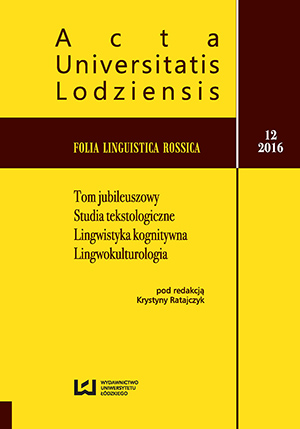Author(s): Jaana Kolu / Language(s): Finnish
Issue: 26/2016
The aim of the present study is to research bilingual Finnish-Swedish and Swedish-Finnish adolescents’ code-switching in Haparanda, Stockholm and Helsinki. In this article, the main focus of the investigation is on the integration of embedded nouns and verbs in intra sentential code-switching from the point of view of grammar. "e article investigates whether the code-switching is governed by a Finnish or Swedish grammar, and how Swedish words are integrated into Finnish syntax and vice versa.The theoretical framework is found in the field of code-switching research and grammatical aspects of language alternation. A central interest of researchers on code-switching grammar is the grammatical constraints on where codes witching can occur in a sentence and where it is not possible because of violating the syntactic structure. "e present analysis of code-switched sentences is also concerned with Pop lack’s equivalence constraint, which predicts that codes witches will tend to occur at points where the juxtaposition of elements from the two languages do not violate a syntactic rule of either language. The primary data was collected in 2014–2016 among bilingual adolescents at three junior high schools in Haparanda. The secondary data was collected in 2014 at a Swedish junior high school in Helsinki and in 2015–2016 at two Swedish-Finnish junior high schools in Stockholm. The data consists of video and audio-recorded group and pair conversations. All the recordings were made outside lesson times. The analysis of the collected conversation data is qualitative.The results of this investigation show that code-switching between Finnish and Swedish is mainly governed by Finnish grammar and Finnish is used in the different noun cases, regardless of the matrix language. Embedded Swedish nouns adopt Finnish inflectional endings in code-switching in Haparanda and Stockholm. However, there are also some exceptions, especially in the conversational data from Stockholm, where the nouns also can be in the base form or follow Swedish syntax. Also, in the conversational data from Helsinki, it is not the matrix language, i.e. Swedish, but the embedded language, Finnish, that provides the case suffixes for the embedded Finnish words. Expressions of the locality are an exception: a prepositional phrase in code-switching can be made up of a Swedish preposition and a Finnish noun in the base form in the Helsinki data. Swedish verbs are incorporated into the Finnish syntactic frame in the data from Haparanda. When a Swedish verb is incorporated into Finnish syntax, the verb gets a Finnish verb marker, e.g. an infinitive marker. In the Helsinki data, too, Finnish embedded verbs inspect in Finnish for tense, mode and person in code-switching. Code-switching actually tends to occur at points where the two languages have equivalent surface structures, although it is also possible at points where Finnish and Swedish have different surface structures, as in negative sentences.
More...















